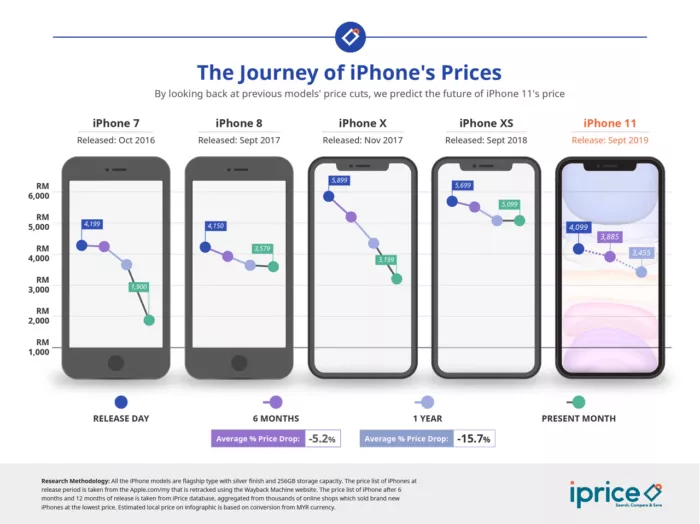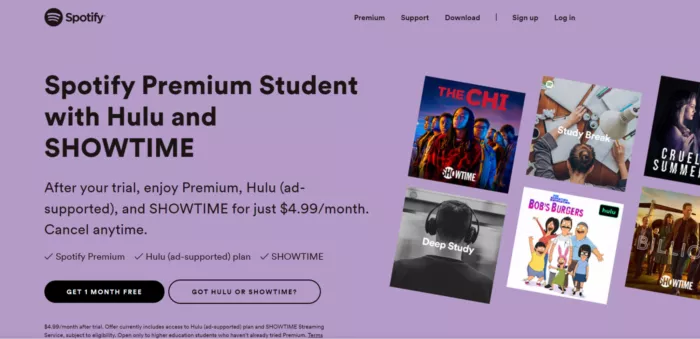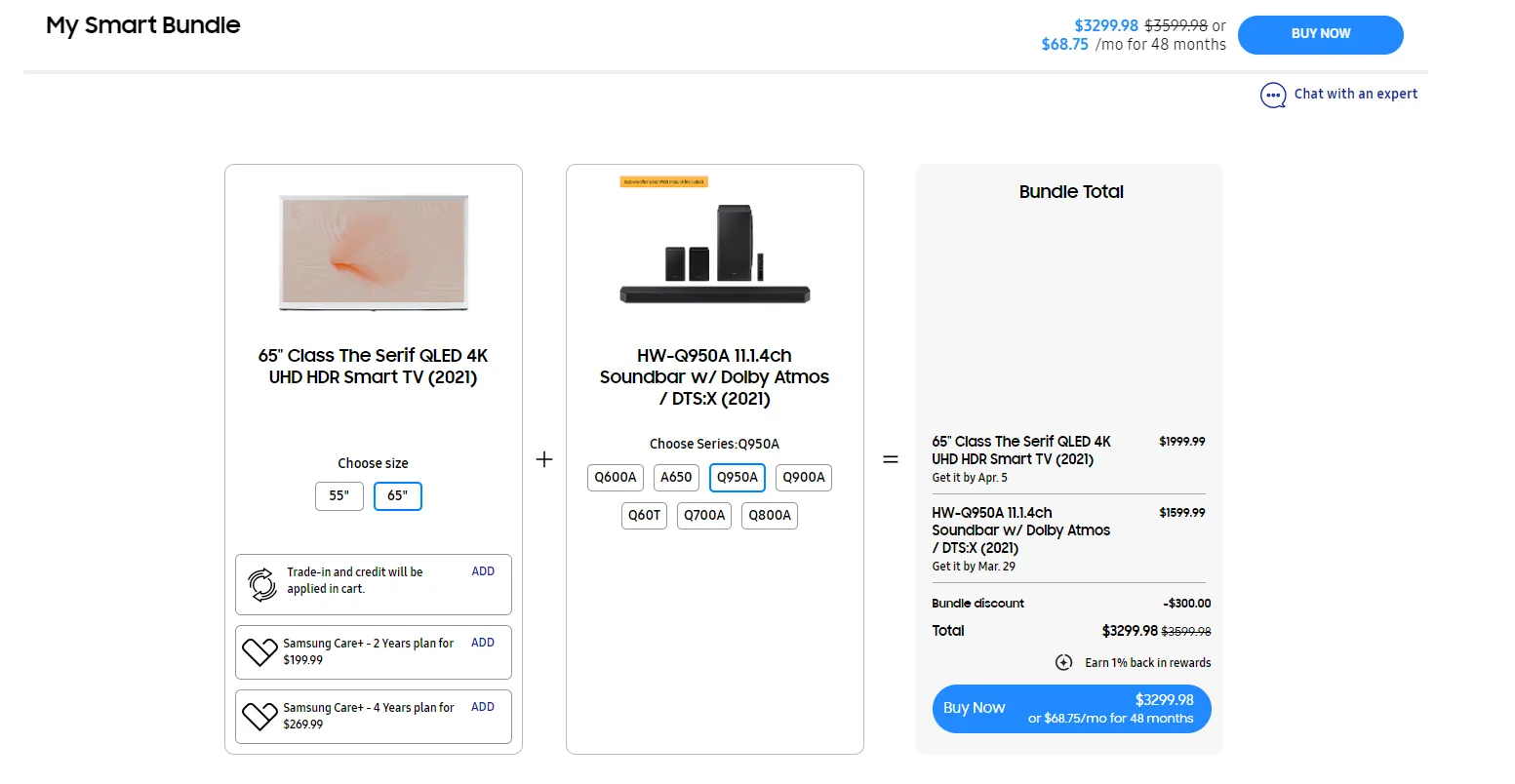15 Types of Pricing Strategies Guaranteed To Boost Sales
Unless your customer base consists of a bunch of Elon Musks, price is one of the most influential factors when it comes to your marketing mix.
Put yourself in the shoes of your typical customer.
The last time you bought a tech product, was price a factor?
What about when you need shoes?
The list goes on and on.
Whether you’re a startup looking to make a splash or you’re already a well-established brand, it doesn’t hurt to learn about all the different types of pricing strategies within arm’s reach.
In this resource, you’ll read about:
- 15 types of pricing strategies that companies often use in e-commerce.
- How each pricing strategy offers different competitive advantages.
- An example of each type of pricing strategy — to give you a clearer understanding of how to apply them in your marketing.
Once you nail the pricing, the rest of your marketing efforts become a lot easier.
So let’s jump right into the first type of pricing strategy…
Want to delegate all your marketing and funnel work done—without the headaches of hiring? Download our free guide: 33 Marketing Projects You Can Delegate to Growbo and discover how to save 100+ hours a month, grow faster, and scale without the overhead.
Type of Pricing Strategy #1: Price Skimming
With price skimming, prices are initially high, then lowered over time.
By charging high prices at first, companies can quickly recover their development and marketing costs.
And by lowering the prices over time, they can attract price-sensitive consumers.
Example of This Type of Pricing Strategy
Apple introduces a new iPhone for $799.
After Samsung releases a new Galaxy a year later, the new iPhone price drops to $699.
Type of Pricing Strategy #2: Penetration Pricing
Penetration pricing, or “leader pricing,” is similar to the “foot in the door” technique used by salespeople.
With this type of pricing strategy, companies offer a low-risk introduction to the brand.
You see, the company just wants to get you in its brand ecosystem so that you’ll become a long-term customer. Then they’ll try to upsell and cross-sell to you.
A lot of startups use penetration pricing to boost their customer base.
Because in a free market economy, low prices equal more demand.
And once a company has established a foothold in the market, they can then increase their prices and get these consumers to buy other products or services from them.
Example of This Type of Pricing Strategy
Video software company Loom lets its email leads know that by signing up with them, you can get 30% off Slack Pro or Business+ for the first year.
Type of Pricing Strategy #3: Differential Pricing
Differential pricing is all about charging different prices for the same product or service to different types of customers.
Why?
Because consumers vary in their level of price sensitivity.
What you do is, break up your target market into smaller sub-markets.
Some of the criteria for doing so may be:
- Age
- Veteran status
- Purchasing behavior
- Loyalty programs
- Customer tenure
From there, you can set prices for each sub-market — to maximize the likelihood of consumers making a purchase.
Example of This Type of Pricing Strategy
Spotify offers an insanely good deal for college students.
For just $4.99 per month, you get access to Spotify Premium, Hulu, and SHOWTIME.
Type of Pricing Strategy #4: Geo Pricing
Geo pricing is just how it sounds: pricing based on geographical regions.
This type of pricing strategy takes advantage of the fact that customers in different locations have a different willingness to pay.
For example, a local grocery chain near me charges more money for the same products as one you’ll find in a low-income area a couple towns over.
But besides willingness to pay, there may also be factors like product availability, government regulations, and cost of living.
Companies try to come up with a price that’s tailored to the specific region.
Example of This Type of Pricing Strategy
Sorry for using Apple as an example again, but I have to.
So I always thought the iPhone was ludicrously expensive in the U.S.
That is, until I saw the prices in some other countries.
Because some countries, like India, have high import taxes, the iPhone is marked up much higher than the U.S. and other countries.
Another reason for higher prices can be due to the fact that price is all relative to the U.S. dollar. So if your country’s currency is weak on the dollar, prices for American goods will be higher.
Type of Pricing Strategy #5: Bundle Pricing
Bundle pricing is the act of selling two or more products or services together at a discounted price.
Companies use this type of pricing strategy to increase the average transaction value.
We often see bundles at the checkout pages or even on the product pages.
To really understand bundle pricing, you need to check out these 11 profitable examples of the upsell.
Example of This Type of Pricing Strategy
Samsung lets you save $300 by purchasing a 65-inch QLED Smart TV and a Dolby Atmos Soundbar at the same time.
Type of Pricing Strategy #6: Product Line Pricing
Product line pricing is the act of setting different prices for products in the same product line (yup, like Apple iPhones).
When a company uses this strategy, it means they’re trying to create different perceptions of value (e.g. quality, features, design).
And the consumer will balance these factors with the overall price — to decide which is the right fit for his or her own needs.
Example of This Type of Pricing Strategy
At Growbo, we offer four tiers of marketing services.
If you choose our Walk package, it will be cheaper than, let’s say, our Fly package.
However, you’ll be missing out on content writing, SEO, video, and not to mention, a 0- to 1-day turnaround for completing tasks.
Type of Pricing Strategy #7: Psychological Pricing
Psychological pricing (or odd pricing) is the act of setting prices that end in certain digits (e.g. $19.95, $49.99).
The purpose of this pricing strategy is to make products appear cheaper than they actually are.
According to one study cited by Super Heuristics, retail sales were 7.98% higher for women’s products in which the prices ended in 99 — compared to products in which the price ended in 00.
Example of This Type of Pricing Strategy
All of the Xbox products on Target’s e-commerce store end in 99.
Type of Pricing Strategy #8: Freemium
Freemium pricing is used to just get users into the brand ecosystem with minimal friction.
A lot of SaaS companies use this type of pricing strategy.
The free version is just a way to get the buyer hooked.
From there, the user might see that they’re missing out on a bunch of other cool features. And that’s when they upgrade.
Although freemium is common in the SaaS space, you can also see it in other business arenas, such as video games (Fortnite) and online learning.
Example of This Type of Pricing Strategy
Coursera, which is valued at over $7 billion, offers thousands of free online courses to millions of non-business users (consumer segment).
Although users can consume the online learning material, they don’t get accreditation unless they pay a fee (which depends on the topic).
There’s also monthly subscriptions for those that wish to pursue specializations, professional certifications, and gain access to Coursera Plus.
According to its Q1 2021 earnings report published on Business Wire, it appears that the consumer segment (with the freemium model) accounts for the most revenue for Coursera.
Type of Pricing Strategy #9: Price Anchoring
Price anchoring is a good way to make your price point more valuable to the consumer by comparing it to another price.
When you’re on Amazon and you see a higher price crossed out and replaced with a lower price, that’s price anchoring. The company is trying to tell you, “You’re getting huge savings.”
Most of the time though, it’s just marketing fluff, and you’re not really getting a deal. The company just wants you to think you are.
That’s why it might be better to price anchor against your competitors.
Now, let’s just look at an example of this type of pricing strategy.
Example of This Type of Pricing Strategy
Paperstone, an e-commerce company that sells printers and fax machines, added price comparisons to its competitors on product pages — boosting conversions by 10%.
This pricing strategy example can be found in our “Proven Sales Conversion Pack.”
Type of Pricing Strategy #10: Promotional Pricing
Yeah, this one is pretty basic.
Just think of every time a product is discounted at the supermarket.
Because by lowering the price, you also lower buyer uncertainty.
Promotional pricing is very common around holidays and special events.
But, as you’ll see in the following example, they’re also applied when a company tries winning back a lapsed customer.
Example of This Type of Pricing Strategy
I’ve been using LastPass for a while now.
But I have yet to sign up for a paid version.
To hook me, LastPass used a little FOMO to try and get me to sign up for the advanced features.
Being 20% off for a limited time, LastPass tried to give me an incentive to sign up at that moment. And that’s really what promotional pricing is all about…incentives. “What’s in it for me?”
Type of Pricing Strategy #11: Quantity-Based Pricing
So there are two ways to look at this type of pricing strategy.
One, it could be something in retail like the whole “buy 2 boxes of cereal, get one free” spiel. Obviously, this is all about incentives.
The purpose of this strategy is to encourage customers to buy more of a product or service by offering a discount when they purchase a certain amount.
But quantity-based pricing could also be used by businesses outside of retail too, such as subscription-based pricing models.
So let’s look at a quick example…
Example of This Type of Pricing Strategy
HubSpot charges customers for its marketing software based on how many contacts they have.
As you add more contacts, your price goes up, but the deal gets better.
Type of Pricing Strategy #12: Cost-Plus Pricing
Notice how Netflix keeps upping its prices so often?
Most likely, it’s due to cost-plus pricing.
As Netflix expands and invests more in original content, they need to recoup those expenses.
Cost-plus pricing also referred to as markup pricing, involves setting a price for a product or service by adding a fixed markup to the cost of goods sold (COGS) and the average customer acquisition cost (CAC). That way, the company generates a consistent profit.
Usually, companies use cost-plus pricing by adding a fixed percentage above the COGS and CAC, but it can sometimes be a flat fee.
Example of This Type of Pricing Strategy
The COGS and CAC for every radio sold from a retailer is $20.
And they want to make a 50% profit from each radio sold.
So management prices the radio at $30.
Retail Price = (Wholesale Price)/(Desired Profit Margin as a decimal) + Wholesale Price
So
$30 = ($20)/(.50) + $20
Type of Pricing Strategy #13: Dynamic Pricing
Dynamic pricing is demand-based.
Rather than having a fixed price set and stone, dynamic pricing is fluid.
With the help of machine learning, prices automatically change with market demand.
This type of pricing strategy is used in lots of industries.
Not only do airliners and hotels use dynamic pricing, but we see it in online retail (Amazon) and for ticket events.
Example of This Type of Pricing Strategy
When demand is really high and there are only so many drivers available, Uber charges customers more money for a fare.
Type of Pricing Strategy #14: Economy Pricing
Have you ever chosen the cheaper, store-brand product over the big-name brand?
That’s the economy pricing strategy at work.
With economic pricing, you sell your product at a very low price point to make it more appealing.
But the quality is lower too.
Unlike penetration pricing, economy pricing keeps the low prices permanently.
Example of This Type of Pricing Strategy
If I want to buy one 24-pack of Poland Spring water from my local online grocery store, it will cost me $5.69 (ignore the promotional sale).
But if I go with the store brand, it will only cost me $4.99 for a 35-pack.
So 11 more bottles of water for 70 cents less.
Type of Pricing Strategy #15: Premium Pricing
With premium pricing, you charge a higher price for your product or service because it’s of better quality.
With higher prices come higher expectations.
So for premium pricing to work, there needs to be a real difference in quality.
It needs to be special or unique in some way to warrant that high price tag.
Example of This Type of Pricing Strategy
Kronos Golf, who struck a deal with Robert Herjavec on Shark Tank in 2014, sells high-end putters.
A lot of their putters have a bit of an old-school, throwback design.
Each putter is expertly crafted with quality materials like stainless steel and carbon steel.
But with the excellent quality comes higher price tags. As of March 2022, the cheapest putter is $350. Most putters, though, are priced around $500-$1,000, with one as high as $1,500.
Conclusion
Want to delegate all your marketing and funnel work done—without the headaches of hiring? Download our free guide: 33 Marketing Projects You Can Delegate to Growbo and discover how to save 100+ hours a month, grow faster, and scale without the overhead.
As you read today, there’s a lot of ways to price products and services.
But not every type of pricing strategy is right for your business.
Even more, some pricing strategies could scare away your customers.
Some of these strategies require you to completely change your business model.
Then there are others you can simply try out with minimal risk.
One thing is for sure though…unless you have the perfect company right now, you need to test the waters.
Once you find what works, there’s no telling what your sales potential will be.
By the way, you’re going to need consumers to actually be exposed to your prices, right? Like with online ads, email, your web pages, and other customer touch points.
If you need a hand with all your marketing efforts from a reliable and dedicated team, book a call with us at Growbo today.
That sales potential I previously mentioned…it will be nothing without a marketing strategy that delivers strong results.
So now, before you go…
Which type of pricing strategy are you leaning towards for your business?
Let me know in the comments below.
Keep Growin’, stay focused.

































